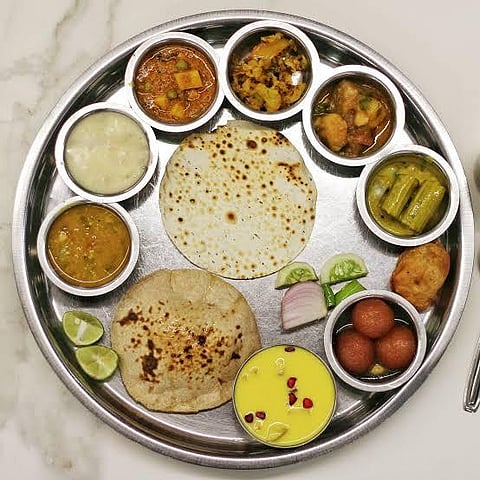

NEW DELHI: As Mahatma Gandhi once bemoaned, there are people in the world so hungry, that God cannot appear to them except in the form of bread. The struggle for a meal remains a matter of life and death for millions, but the past few years of diving food prices may have made it a little less difficult for Indians, indicates an analysis of thali prices published in the Economic Survey 2019-20.
Tracking the average price of the quintessential Indian meal over the past thirteen years using both vegetarian and non-vegetarian models, the analysis finds that the sharp fall in food inflation post financial year 2015-16 has resulted in a significant increase in affordability. “... we find that affordability of vegetarian thalis has improved (between) 2006-07 to 2019-20 by 29 per cent and… non-vegetarian thalis by 18 per cent,” the survey noted.
ALSO READ | Budget 2020: India needs cash and lots of it, can Nirmala Sitharaman deliver?
According to the survey, the shift downward in the prices of dal and vegetables beginning 2015-16 marks a threshold in price trends. Both food categories form a substantial part of Indians’ staple food intake and the increase in their prices in 2019 had resulted in thali prices during the year shooting up too. The analysis uses a projected trend of food prices based on their trajectory before 2015-16 and compares them to their real rates to arrive at a nominal gain for each household due to the fall in prices.
Using this method, the survey says that without the downturn in prices, an average household of five individuals would have had to spend Rs 10,887 more on average a year for two vegetarian thalis, while this number stands at Rs 11,787 a year for the non-vegetarian model.
ALSO READ: Governments have no business to be in business, suggests CEA. Now, it's over to Nirmala!
The survey also estimates nominal gain from falling prices on a year by year basis. For the vegetarian model, the all-India average indicates a gain of around Rs 3 per Thali: 10 paise in 2016-17, Rs 2.8 in 2017-18, Rs 4.6 in 2018-19 and Rs 4.4 in 2019-20. In the case of a non-vegetarian thali, nominal gain was Rs 1.8 in 2016-17, Rs 2.4 in 2017-18, Rs 4.5 in 2018-19 and Rs 4.2 in 2019-20.
Subramanian also uses daily wage data from the Annual Survey of Industries to show that the fall in costs have increased affordability. For the vegetarian model, an individual who would have spent around 70 per cent of daily wage on two thalis for a household of five in 2006-07 would have been able to afford the same from around 50 per cent of daily wage in 2019-20 (April to October). As for the non-vegetarian model, this figure has fallen from around 93 per cent to around 79 per cent.
The trend also holds true to a large extent when data is analysed state-by-state. “Between 2006-07 and 2019-20 (April-October), vegetarian thali has become more affordable in all states under consideration. In the case of non-vegetarian thali, affordability has increased during this period in all states except Bihar and Maharashtra, where it has shown a marginal decline,” the survey noted. During April-October 2019, Jharkhand offered the most affordable thalis, both vegetarian and non-vegetarian.